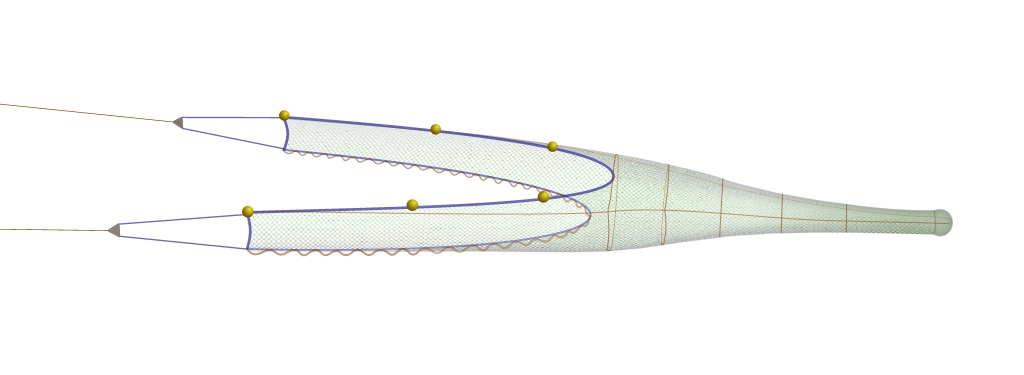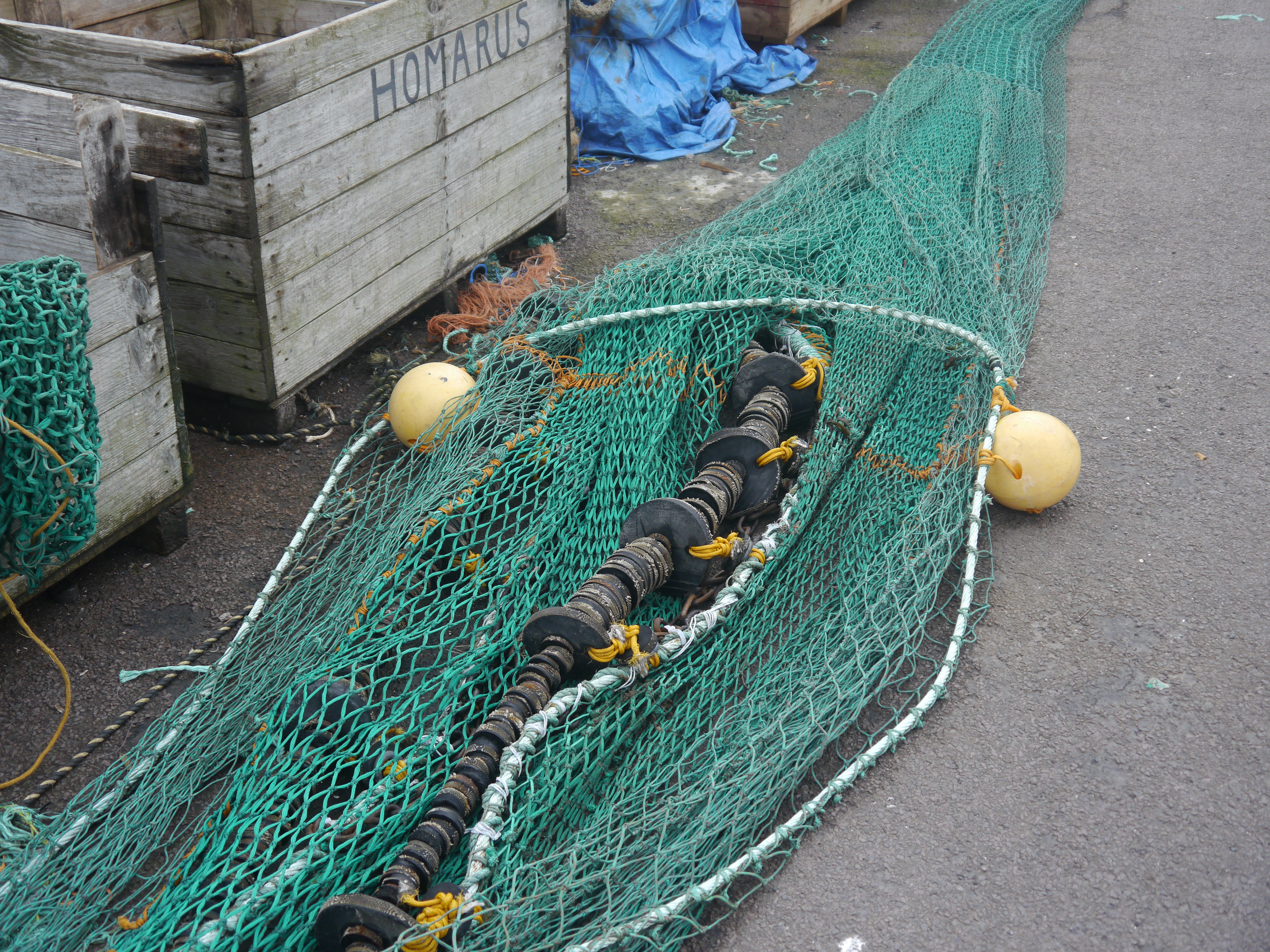Coverless Trawls
Summary
A coverless trawl has the top panel of the net cut back so that the headline and footrope are of similar length. This helps to allow the release of fish rising in front of the footrope.

Size selectivity
A coverless trawl is more effective in releasing the larger fish above approximately 150mm. Haddock, whiting and to some extent hake are known to rise ahead of the footrope of the trawl and can escape more easily from a coverless trawl. However there is a tendency for the smaller fish of these species to stay close to the seabed in which case the numbers escaping upwards ahead of a coverless trawl will be minimal. Fish below approximately 150-180mm in length tend to stay low in the trawl and swim just above the sand cloud created by the ground gear of the trawl. This may be a survival instinct to stay close to the seabed away from many predators.

Other information
Another selective design working on the fish’s natural escape behaviour is the coverless trawl. Over the years traditional trawls have evolved with the top panel projecting further forward than the lower panel (cover or square), to prevent the escape of fish upwards, ahead of the trawl.
The coverless concept removes this overlap and makes the headline and footrope approximately the same length, so that they are directly above one another when the net is being towed, allowing fish to escape upwards. This is usually combined with a reduction in headline height to make it easier for the unwanted fish to escape.
This gear has proved to be very effective in reducing the bycatch of haddock and whiting greater than 150mm in length. It would appear that the smaller fish of these species do not rise up ahead of the trawl, but stay close to the seabed and pass into the trawl. One of the big advantages of this is type of device is that the fish are allowed to escape without ever being caught by the net, therefore there should be a 100% survival rate of the fish passing above the lowered headline.
Coverless nets have been used successfully for more than 15 years by some inshore nephrops fishermen in the UK to reduce their bycatch of whiting and haddock. In many situations by reducing the bulk of fish entering the trawl there is a noticeable increase in the quality and quantity (7-10%) of nephrops retained in the trawl. It is a fairly simple process for the more able skippers to alter an existing trawl to be coverless, but it is better to get a purpose built trawl that is designed to accommodate the reduced headline height. But one word of caution. Due to the reduction in drag, as a consequence of the reduced headline height, and the freedom the net has to spread, due to the extended headline, the skipper often has to make other alterations to his overall gear setup to work a coverless trawl efficiently.
Selection type
-
- Post-selection